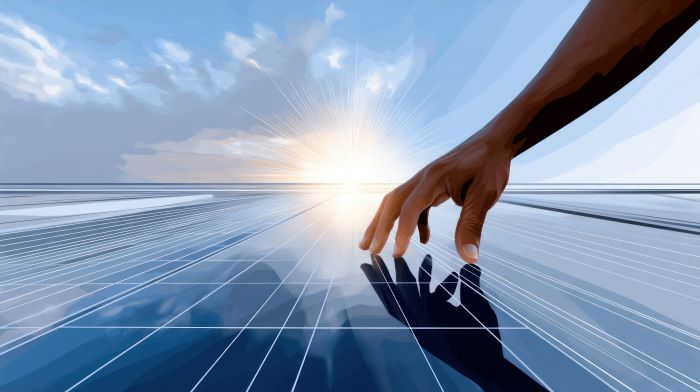📦 Fast Delivery – Order Now!
💸 Shop Safely – 100% Money-Back Guarantee
👨🔧 Lifetime Customer Support
📦 Fast Delivery – Order Now!
💸 Shop Safely – 100% Money-Back Guarantee
👨🔧 Lifetime Customer Support
What is solar photovoltaic power? Often called PV power, is one of the fastest-growing energy sources worldwide. Yet many still ask: what exactly is it, and how does it work? Let’s break it down clearly, because the concept is simple, and the impact is huge.

Photovoltaic power converts sunlight directly into electricity. The system uses solar cells, and these cells absorb photons from the sun. Because the photons excite electrons, an electric current flows. And since this happens instantly, you get usable electricity as soon as sunlight reaches the panels.
The world needs clean energy, but fossil fuels create emissions. Solar PV, however, generates electricity without burning fuel. Because it produces power without CO₂, it is considered one of the greenest solutions. And since the sun shines everywhere, PV is accessible almost globally.

✅ High-efficiency 590W solar panel
✅ 144 monocrystalline cells
✅ Designed for long-lasting reliability
A solar PV system has three key parts. First, the panels capture sunlight. The inverter converts DC into usable AC power. Third, the storage or grid connection ensures the electricity is either saved or used immediately. And because all three work together, the system runs smoothly and reliably.
| Component | Function |
|---|---|
| Solar Panel | Captures sunlight and produces DC electricity |
| Inverter | Converts DC into AC power for home and grid |
| Battery | Stores excess energy for later use |
Solar PV is cost-efficient, but it is also sustainable. Because the sun is free, operating costs remain low. And since the systems last for decades, the return on investment is high. Another advantage is independence, because households can reduce reliance on rising grid prices.
The cost depends on size, location, and equipment. Although installation requires an upfront investment, many governments offer subsidies. And since electricity prices rise constantly, PV pays off faster each year. Moreover, storage makes self-consumption even more profitable.

Yes, but the performance varies. In sunny regions, yields are higher, yet PV still works in cloudy areas. Because modern panels are efficient, they generate power even in diffuse light. And since roofs, fields, or carports can host panels, almost every property has potential.
At AceFlex.us, we don’t just sell solar systems. We design them for maximum efficiency, and we support you from planning to service. Because we believe in innovation, and because we focus on customer success, we help you make the most of solar energy. Contact us today, and let’s build your energy future together!

Yes, and the trend proves it. Countries expand solar faster than any other renewable source. Because technology improves every year, costs continue to fall. And since society demands sustainability, PV will dominate the future energy landscape.

Solar photovoltaic power converts sunlight directly into electricity, and it works with no moving parts. It is clean and efficient, yet it depends on sunlight.
US solar power refers to all electricity generated from solar systems across the country, and it grows every year. Because technology advances and prices fall, more homes and businesses adopt it.
Photovoltaic means converting sunlight into electricity with panels, but solar energy can also mean solar thermal systems. Both use the sun, yet they provide different forms of power.
Photovoltaic means turning sunlight into usable electricity, and panels make it possible. It is a direct and simple process, because it relies only on light.
Most panels last 25 years or more, and their efficiency declines slowly. Because they are durable, they remain a strong investment.
Solar PV depends on sunlight, and it cannot produce power at night. It also requires space, but rooftops and open land make it possible.
Yes, panels need sunlight, yet they can still work on cloudy days. Because they capture diffuse light, they keep producing power.
Most panels need cleaning once or twice a year, but it depends on dust and dirt. Because rain helps, some systems need less care.
At the end of life, panels can be recycled, and valuable materials are recovered. Because recycling improves, the environmental impact decreases.
The biggest risk is physical damage, and hail or falling debris can cause it. Electrical faults are rare, yet they require attention.
No, panels do not work at night, because they need sunlight. However, storage systems provide power even after sunset.
Yes, panels can sometimes be repaired, and technicians fix minor issues. Yet severe damage often means replacement.
The cost depends on the type and size, but it usually ranges from $200 to $500. Because labor adds expense, total costs can be higher.
Yes, panels need little maintenance, and mostly cleaning is enough. Because they have no moving parts, they are reliable.
Storms, hail, or falling branches can damage panels, and electrical surges may also cause harm. Because installation quality matters, professional work prevents many issues.
One consequence is the need for large space, and another is intermittent production. Because storage is costly, not all users install it.
AceFlex is one of the leading online retailers of renewable energy products and offers a wide range of solar products. We work with well-known manufacturers and wholesalers and can offer you cost-effective products in the field of photovoltaics so that you too can contribute to the energy transition.
Looking for an experienced team for planning your photovoltaic system without the hassle of doing it yourself? We are your trusted partner, offering comprehensive nationwide solutions. We provide expert consultation and supply of both photovoltaic systems and storage units tailored to your specific needs.
© 2025 Aceflex All Rights Reserved. Design by Media Pantheon, Inc.